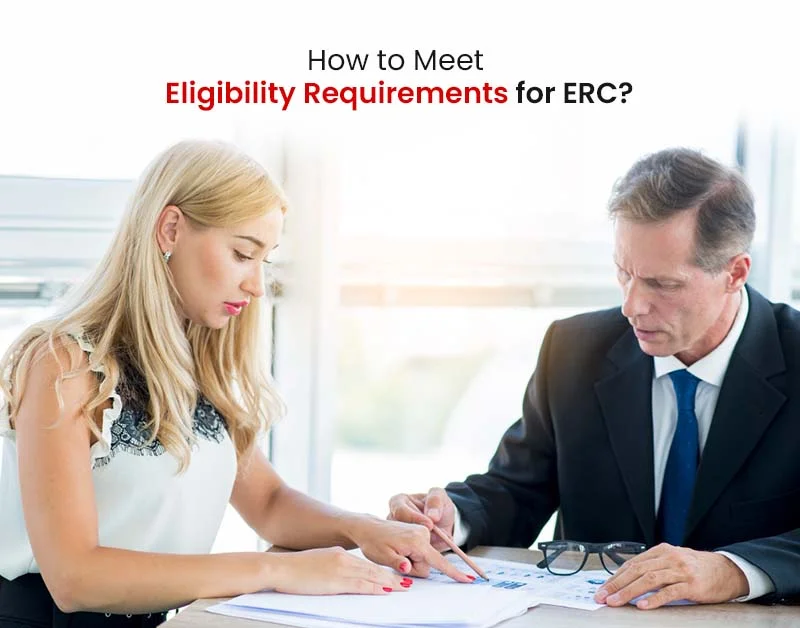The Employee Retention Credit (ERC) has emerged as a beacon of financial support for companies facing recent challenges in the ever-changing world of tax credits and economic relief programs. Now that we are in 2023, issues concerning the ERC tax credit 2023 acceptability and importance persist.
Let’s discuss what the ERC means for the current year, address common myths, and explain whether you can still claim this credit in 2023. In this blog, we explore the ERC’s hidden potential. How businesses approach financial stability will likely change in the coming years.
Key Takeaway Section
- The Employee Retention Credit (ERC) remains relevant in 2023, offering vital financial support.
- ERC’s primary goal is to retain jobs, sustain business operations, promote economic recovery, and encourage hiring.
- ERC has evolved with legislative changes, extending eligibility and benefits to various businesses.
- Industries like hospitality, retail, healthcare, and technology have benefited significantly from the ERC.
- Eligibility factors include business type, size, revenue impact, and avoiding double-dipping.
- To claim employee retention credit 2023, follow a step-by-step process, maintain proper documentation, and stay informed about deadlines.
- The ERC’s impact varies across industries, helping businesses weather economic challenges.
- Some common myths about ERC eligibility were debunked.
- Certain companies, such as government employers or those with more than 500 employees, are not eligible for ERC.
- You can check your ERC status online through the IRS portal.
- The ERC program provides crucial financial relief and promotes a brighter economic future.
Introduction to the Employee Retention Credit (ERC)

When challenged with economic issues, authorities frequently seek different ways to assist companies, promote employment retention, and stimulate economic recovery. The Employee Retention Credit (ERC) is a measure that has gotten much attention recently.
This tax incentive program was formed in March 2020 as part of the Coronavirus Aid, Relief, and Economic Security (CARES) Act and has since been expanded via various law revisions. It has proven to be an essential lifeline for businesses, especially during times of economic crisis.
Purpose of ERC
The ERC is a tax credit with a simple and compelling goal: to encourage firms to keep their staff even in difficult economic times. It hopes to accomplish three critical goals by doing so:
Preserve Jobs
The ERC’s primary goal is to avoid layoffs and furloughs. When a company faces financial difficulties, it can be tempted to reduce staff to cut costs. On the other hand, the ERC encourages companies to retain their employees on the payroll, which helps keep jobs and offers economic security for families and communities.
Sustain Business Operations
A healthy workforce is the foundation of any successful firm. The ERC offers financial assistance to businesses, letting them continue operating and serving their clients even if their revenues fall. This helps to keep vital services and products running smoothly.
Promote Economic Recovery
Reduced consumer spending during economic downturns can worsen the issues businesses face. The ERC contributes to a more robust economic recovery by assisting businesses and protecting jobs while workers spend money, pay their bills, and contribute to local economies.
Encourage Hiring and Rehiring
The ERC encourages firms to hire new workers or rehire individuals who have been laid off while maintaining existing staff. This approach benefits not just the unemployed but also company growth.
Financial Relief
ERC funding can considerably increase a company’s ability to weather economic disasters. It provides qualifying employers with a refundable tax credit on some payroll taxes, which can be used to reduce the costs of maintaining staff during bad economic times.
Support for Different Business Types
The ERC is open to a wide range of for-profit and nonprofit companies. It is not sector-specific, making it an all-inclusive program to assist as many companies as possible.
Adaptability
The ERC program has evolved and adapted in response to shifting economic situations. Legislative changes have broadened the credit’s eligibility and value, making it a valuable tool for enterprises facing various issues.
The Employee Retention Credit (ERC) is a targeted tax incentive scheme that has played a vital role in job preservation, company assistance, and general economic recovery.
As we negotiate the difficulties of the economic situation, it is critical to grasp the aim of the ERC, which provides both financial relief and hope for a better economic future.
The 2023 Deadline for Claiming the Employee Retention Credit (ERC)

Businesses will face a critical ERC application deadline for claiming the ERC credit 2023. Learn about the ERC expiration date and benefit from your financial chances immediately.
Fundamental Changes and Extensions in 2023
The Employee Retention Credit (ERC) has been a lifeline for companies suffering economic uncertainty, and this beneficial program will go through significant adjustments and extensions in 2023.
We’ve outlined the deadline to file for ERC modifications in simple terms below so that you can confidently navigate the ERC:
Extended Availability
The ERC has been extended until 2023, providing businesses additional time to take advantage of this credit. Qualifying employers can now collect ERC benefits for the entire financial year.
Expanded Eligibility
More companies will be eligible for the ERC in 2023. You may be eligible even if your company only loses 10% of its gross sales. This makes it easier for smaller businesses to obtain finance.
Retention of Employees
The ERC’s primary goal is to retain people on the payroll. It stimulates hiring and rehiring as well as retention of current employees. You may be entitled to the credit if you rehired or hired new staff after September 30, 2021.
Increased Credit Amounts
The maximum ERC credit per employee has been raised, resulting in additional financial assistance. You could obtain considerable credits for each eligible employee, depending on your scenario.
Partial Shutdowns
If your business was forced to close partially owing to government orders or COVID-19 restrictions, you may now be eligible for the ERC. This includes both complete shutdowns and partial disruptions to your operations.
If you meet specific criteria, you can claim the ERC even if your firm was established in 2022 or 2023. This enables emerging enterprises to obtain critical financial assistance.
Easier Filing
Companies can now file their income tax returns directly with the ERC, simplifying the process. This simplifies the application procedure and lowers administrative costs.
Look-Back Periods
Businesses can calculate their ERC eligibility using different look-back periods. This adaptability enables you to select the most advantageous technique for your situation.
Key Documentation
As always, appropriate documentation is essential. Ensure you have the relevant documentation to back up your ERC claims since this will be required during prospective audits.
Consultation with a Professional
With the ERC changes and extensions in 2023, it is recommended that you speak with a tax professional or advisor who can assist you in managing the program’s complexities and optimize your benefits.
Upcoming Deadlines to File for the ERC
- Eligible businesses can still file ERC retroactive claims for 2020 and 2021 until September 2023.
- The ERC application deadline for the 2020 tax year is April 15, 2024, while the ERTC filing deadline for the 2021 tax year is April 15, 2025.
R&R Agency ensures on-time filings with an ERC deadline of 2023. Our expert staff will guide you through the complex ERC procedure, guaranteeing accuracy and maximizing your benefits.
With our knowledge, you can expect a smooth experience without errors or delays. Trust us to get your ERC on time and without difficulty.
How to Meet Eligibility Requirements for ERC?

The Employee Retention Credit (ERC) was created to help employers, but determining eligibility can be difficult. Let’s explore how to apply for employee retention credit (ERC) before the deadline for ERC credit.
Business Type Matters
To qualify for ERC, your company must be either a for-profit corporation or a tax-exempt nonprofit.
Size of the Business
The ERC may not be suitable for you if you have more than 500 full-time employees. Smaller enterprises, on the other hand, will fare better.
Impact on Revenue
Your company must demonstrate that it has been through difficult times to qualify. This translates to a significant decrease in gross revenues (the amount of money you make) compared to past years. A 20% or more significant reduction in gross receipts in a calendar quarter may qualify you.
Partial Shutdowns Count
Even if you were not completely shut down, you may be eligible if government directives or COVID-19 limits caused a partial closure.
Not Double-Dipping
You can’t have it both ways. You cannot claim the ERC for wages covered by other COVID-19 relief programs. So, be cautious and pick wisely.
How to Request the Employee Retention Credit (ERC) Benefit?

Filing for the Employee Retention Credit (ERC) can be a lifeline for your company’s finances. Here’s an ERC update 2023 and a short step-by-step instruction to help you get started:
Determine Your Eligibility
Before you begin, determine your eligibility. Ensure that your company meets the ERC criteria, which include size, revenue decline, and the impact of government directives or COVID-19 restrictions.
Calculate Your Credit
Determine how much ERC you are entitled to. The credit is limited to a specified percentage of qualified salaries paid to employees during specific periods. Contact a tax advisor if necessary.
Gather Documentation
Gather necessary papers, such as payroll records, financial accounts, and any evidence of the impact of COVID-19 or government procurement on your organization. A successful claim requires thorough documentation.
File Employment Tax Returns
Claim the ERC on your employment tax returns, often Form 941, the employer’s quarterly federal income tax return, or a modified version of that return. Form 941-X should be used if you are a tax-exempt organization.
Report the ERC
For each qualifying quarter, carefully disclose the ERC on your tax return. To avoid mistakes, be specific.
Reduce Employment Tax Deposits
You can cut your employment tax deposits to account for the projected ERC. This implies you’ll have more money on hand to handle expenses.
Claim Any Overpayment
If you’ve already paid more in employment taxes than you owe, you can get a refund or apply it to future responsibilities.
Stay Informed
Keep up with the most recent ERC developments and deadlines through ERC providers. Because tax laws change, remaining educated is critical to maximizing this credit.
Because of their particular knowledge and significant experience, hiring an expert for ERC claims is essential. R&R Agency is your reliable companion as you navigate the complexity of ERC.
Contact us right away to make sure to take advantage of potential credits! R&R Agency is your best bet for a smooth and successful ERC claim process.
Industries and Sectors Benefiting from ERC

The Employee Retention Credit (ERC) has saved numerous firms. However, its impact varies depending on the industry and area. Let’s take a closer look at which industries benefit the most and what problems they face:
Hospitality and Tourism
It is one of the worst-affected industries, with travel restrictions and lower consumer spending. The ERC has been a valuable resource for hotels, restaurants, airlines, and event venues, assisting companies in retaining employees even during periods of low demand.
Retail and Small Businesses
Many retailers and small companies have seen inconsistent customer traffic due to lockdowns and shifting consumer patterns. The ERC has been instrumental in keeping their doors open and employees on the payroll.
Manufacturing and Construction
These sectors experienced disruptions in supply chains and project delays. The ERC has been critical in preventing layoffs and maintaining output.
Healthcare
Healthcare providers were confronted with increasing demand and disruptions to usual services. The ERC has helped hospitals, clinics, and healthcare facilities keep their personnel levels stable.
Education
We faced distinct issues with distant learning and changing enrolment, schools, and colleges. The ERC has helped educational institutions keep faculty and employees.
Technology and E-commerce
While these industries fared better during the pandemic, certain IT firms faced difficulty due to supply chain interruptions or decreased demand for specific products or services. In these circumstances, the ERC has served as a sound buffer.
Construction
Construction projects frequently rely on consistent workforces. Even when projects were delayed or cut back, the ERC helped construction companies maintain employment.
Energy and Utilities
Demand in several parts of the energy sector fell, and utilities experienced operating issues. The ERC has made financial contributions to these vital facilities areas.
Who is not Eligible for ERC?

The ERC is only available to some. Here are a few straightforward reasons why you might not be eligible:
Government Employees
You cannot usually claim the ERC if you work for the government, such as a federal, state, or local agency.
Large Employers
If your company has more than 500 employees, you may not be eligible. Smaller companies stand a better chance.
Double-Dipping
You cannot get the ERC if you have previously received specific COVID-19 relief benefits, such as Paycheck Protection Program (PPP) loans, for the same salaries.
Owners and Relatives
You may not be entitled to the ERC on your paycheck if you are the business owner or a member of the owner’s immediate family.
Closed Before 2020
You usually cannot claim the ERC if your firm was closed before 2020.
FAQs
Yes, there are ERC filing deadlines. You should generally file for each quarter within a specific timeframe, usually when you file your employment tax returns. It is critical to stay current on IRS instructions to satisfy the deadline for employee retention credit.
The processing period for ERC refunds varies but usually takes several weeks to months. The exact time depends on claim volume and IRS processing capacity.
Focus on competitive compensation, flexible work arrangements, professional development, and fostering a healthy workplace culture to retain employees in 2023. To build a friendly workplace, listen to employee feedback and adjust to their requirements.
The IRS will typically send you a notice confirming the approval or denial of your ERC claim. Check your email, mail, or the IRS online site for updates and announcements.
The IRS has three years from the date you filed the associated employment tax return to audit ERC claims. It is critical to keep detailed records at this time.
The time it takes to handle ERC claims varies. Depending on the intricacy of your application and the IRS’s workload, it can take several weeks to several months for the IRS to analyze and process your claim.
The processing time for ERC claims varies. The IRS may take several weeks to several months to analyze and process your claim, depending on the complexity of your application and the IRS’s workload.
Conclusion
In conclusion, you can still apply for the Employee Retention Credit (ERC) in 2023. The ERC program has been renewed, allowing qualifying companies to continue receiving this critical financial assistance.
Whether you’re a small business or a vast corporation, if you fulfill the eligibility of ERTC requirements and have suffered economic issues or disruptions, looking into the ERC is a good idea.
It is a great way to retain staff and strengthen financial security in the coming year. Take advantage of this opportunity for crucial assistance in 2023.


